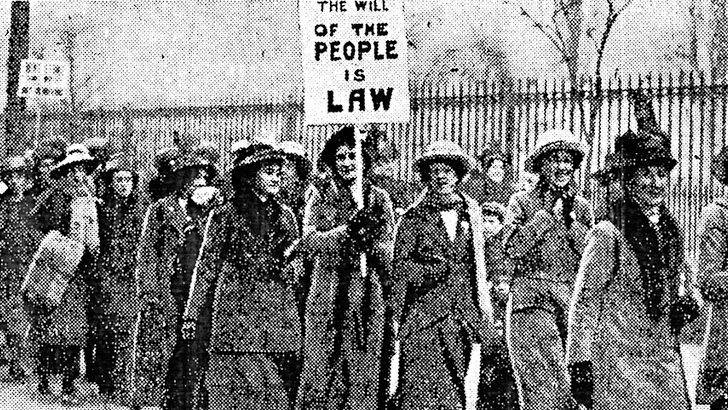Mrs Barbour’s army

Glasgow, 17 November 1915: 20,000 households in Glasgow – all the major munitions districts – are on rent strike. Thousands of working class women, collectively known as “Mrs Barbour’s army”, along with thousands of engineering and shipyard workers, march on the sheriff’s court in Glasgow’s largest demonstration ever.
The workers of Glasgow are poised to bring their industrial power behind the rent strikers: “The temper of the men was such that in the event of wholesale evictions taking place … they would not hesitate not only to prevent evictions, but to influence Parliament by every other means in their power”, remembered William Reid, a shop steward and tenants’ leader.
The strike is a key battle during the Red Clydeside – a mass anti-war movement involving militant strikes and demonstrations by the workers of the industrial belt along the Clyde River. They form rank and file committees to organise independently from conservative union officials who have taken an anti-strike position during the war.
The socialist John MacLean makes speeches in front of mass rallies, calling for workers’ revolution to end the war and overthrow the capitalist system.
The war continually is used to drive down wages and increase the exploitation of the working class. Workers are told to make sacrifices while the capitalists continue to profit. As the city becomes a centre for war production, an influx of immigration leads to a housing shortage. The Glasgow estates grow more squalid and are the most overcrowded in Britain.
Landlords cruelly profit from the situation by increasing rents, often at short notice, and evict tenants who fall behind, taking advantage of the housing shortage immediately to refill the space.
Mary Barbour is the most prominent leader of the rent strike. This working class woman from the district of Govan became active in politics early, joining the Independent Labour Party and the Socialist Sunday School movement. She organises the women into tenant committees to take direct action to stop evictions.
Printed signs are put in the window of each house declaring their refusal to pay higher rent.
A key tactic is to organise sentries to watch for the factors (property managers). When a factor approaches, the sentry sounds the alarm and all the women rush out to defend their neighbours’ homes, driving out the eviction officers with wet clothes, flour bombs, rotting food – whatever is at hand.
The landlords and factors try to undermine the movement through divide and rule and intimidation. On one occasion, some tenants are intimidated into paying higher rent. Mrs Barbour responds, calling workers out of the shipyards to march up to the factor’s office to demand the money back. The sight of thousands of angry workers persuades the factor of her argument; he quickly returns the money.
The situation comes to a head when Barbour and the other ringleaders are charged in an attempt to cut off the heads of the movement. Thousands of workers rally in support, culminating in the 17 November demonstration. The court actions against the rent strikers collapse. The government is forced to pass the Rent Restriction Act 1915, which reduces and freezes rents at pre-war levels across Britain for the duration of the war.
The militant movement of bold direct action led by the working class women of Glasgow, Mrs Barbour at the forefront, thus provides a major gain for the whole of Britain’s working class.